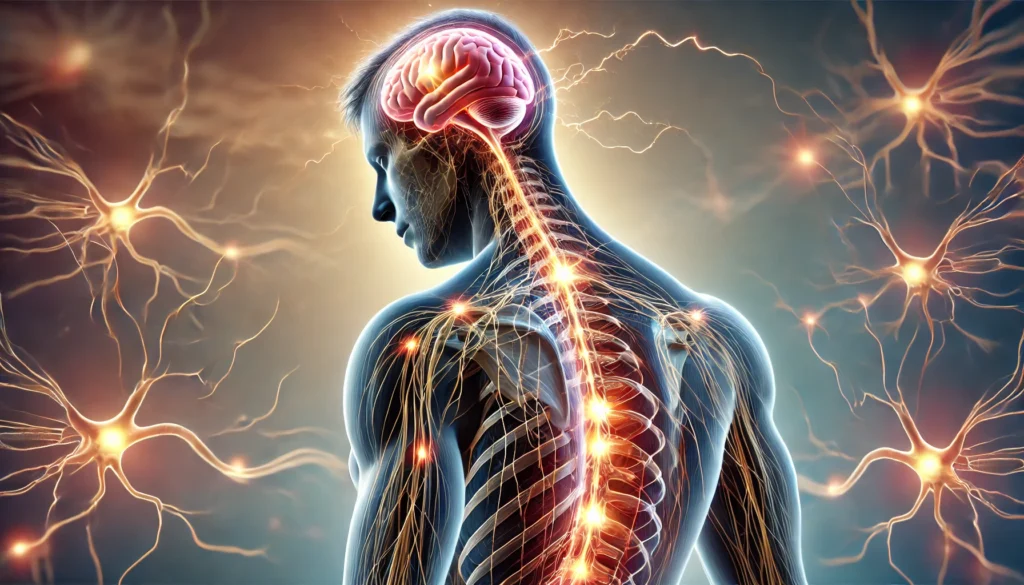Have you ever stubbed your toe and instantly felt that sharp, almost electrifying pain shoot up your leg? Or maybe you’ve experienced a dull ache that lingered for days after pulling a muscle. Pain is something we all encounter, but did you ever stop to think about what exactly is happening in your body when you feel it? This blog explores the fascinating science of pain perception and management, diving into how our bodies recognize pain and how we can manage it effectively.
What is Pain Perception?
Pain perception is a complex process that involves both physical and emotional responses. At its core, pain is our body’s alarm system, warning us when something is wrong. But how exactly does this process work?
When you get injured or experience some form of tissue damage, your body’s nerve cells—called nociceptors—are activated. These nociceptors send electrical signals to your brain, alerting it to the damage. But it doesn’t stop there. The brain then processes this information and determines the type and intensity of pain, allowing you to feel everything from a mild ache to severe discomfort.
To break it down:
Injury or damage – When cells are damaged, they release chemicals like prostaglandins that activate nociceptors.
Transmission to the brain – These signals travel along nerve fibres to the spinal cord and then to the brain.
Processing in the brain – Different areas of the brain process the pain. The thalamus acts as the central hub, sending pain signals to the cerebral cortex (responsible for sensory perception) and the limbic system (which controls emotions).
Pain perception – Finally, you become aware of the pain and may react emotionally or physically.

Why Do We Experience Different Types of Pain?
You might wonder why some pain feels like a sharp stab while other times it feels like a dull throb. The reason lies in the type of nociceptors activated and how fast the signals travel. There are two main types of pain:
Acute pain – This is sudden and sharp, usually caused by an immediate injury. For instance, when you accidentally touch a hot surface, your brain receives and processes the signal quickly, prompting you to pull your hand away.
Chronic pain – This is long-lasting and often related to an ongoing condition, such as arthritis or nerve damage. Unlike acute pain, chronic pain doesn’t have a clear signal to stop, and the brain may continue to perceive it even when the original injury has healed.
How Does Our Brain Influence Pain?
What’s intriguing about pain is that it’s not purely physical. The brain plays a huge role in how we perceive and tolerate it. Ever notice how your mood or stress levels can make pain worse? That’s because of the mind-body connection. When we’re anxious or depressed, the brain’s perception of pain can become heightened, making the experience more intense.
Conversely, the brain can also dampen pain signals. This happens through a process called descending modulation, where certain brain chemicals like endorphins (our natural painkillers) are released to reduce the sensation of pain. This is why some people, particularly athletes, can “push through” intense physical pain during competition.
Common Methods of Pain Management
Now that we know how pain is perceived let’s explore how it can be managed. While no method is one-size-fits-all, pain management usually involves a combination of medical treatments and lifestyle changes.
Medications
Pain-relief medications are the most common method of managing pain. They are categorized into different classes:
Non-steroidal anti-inflammatory drugs (NSAIDs) – Drugs like ibuprofen or aspirin reduce inflammation and relieve mild to moderate pain.
Opioids – These are stronger medications used for severe pain. However, opioids can be addictive and are often prescribed only for short-term use.
Antidepressants and anticonvulsants – Interestingly, these medications, typically used for mood disorders or seizures, can also help manage certain types of chronic pain, such as nerve pain.
Physical Therapy
Physical therapy focuses on strengthening muscles and improving flexibility to alleviate pain, particularly in cases of musculoskeletal issues like back pain or arthritis. Case study: A 2019 study found that regular physical therapy significantly reduced the reliance on opioids for pain management in patients with chronic lower back pain.
Mind-Body Techniques
Since our mental state can influence pain, techniques like meditation, yoga, and cognitive-behavioural therapy (CBT) are becoming increasingly popular. These methods teach people to manage their emotional responses to pain, helping them cope more effectively.
A notable example of this is the placebo effect, where people report feeling less pain after taking a “dummy” pill because they believe it will help. This shows how powerful the mind can be in influencing pain perception.
Lifestyle Changes
Exercise, diet, and sleep play key roles in managing pain. Regular exercise helps release endorphins, which naturally reduce pain. A balanced diet full of anti-inflammatory foods like fruits, vegetables, and omega-3 fatty acids can help as well. Proper sleep gives the body time to repair and recover, reducing sensitivity to pain.
Emerging Technologies
Advancements in medical technology are also paving the way for new pain management solutions. For example, transcutaneous electrical nerve stimulation (TENS) uses low-voltage electrical currents to block pain signals, while neuromodulation devices can target specific areas of the brain or spine to reduce chronic pain.
The Future of Pain Management
The field of pain management is continuously evolving. Recent research focuses on personalized medicine, which tailors treatments based on a person’s genetics and specific pain conditions. There’s also growing interest in non-invasive brain stimulation techniques, which can alter pain perception by stimulating certain brain areas.
Conclusion
Pain is a universal experience, but the way we perceive and manage it is highly individual. Understanding the science behind pain perception can empower us to make informed decisions about our health and treatment options. Whether through medication, therapy, or lifestyle changes, there are numerous ways to effectively manage pain and improve quality of life.
As science progresses, we may one day see even more effective, personalized approaches to pain management, potentially leading to a future where pain is easier to control. So, the next time you experience pain, remember that your brain is in charge, and with the right tools, you can manage it.
Author’s Note
Thank you for reading! Pain is something we all experience, but it’s amazing how much control we have over it through our mindset and lifestyle choices. If you found this article helpful, feel free to share it with others who might benefit from understanding the science behind pain.
G.C., Ecosociosphere contributor.





Comments
Thank you for your articles. I find them very helpful. Could you help me with something? http://www.hairstylesvip.com
Thank you for your articles. They are very helpful to me. May I ask you a question? http://www.ifashionstyles.com